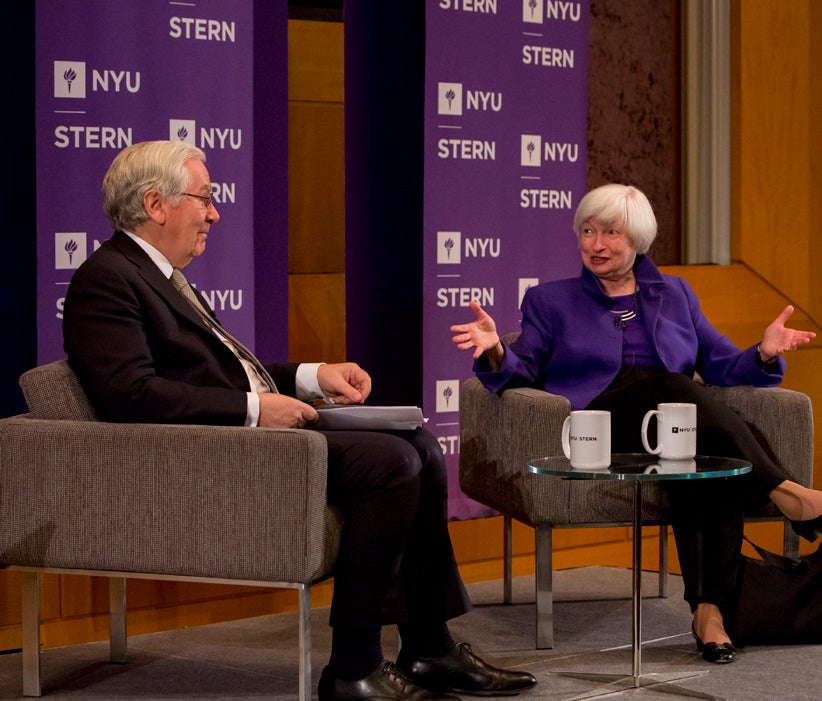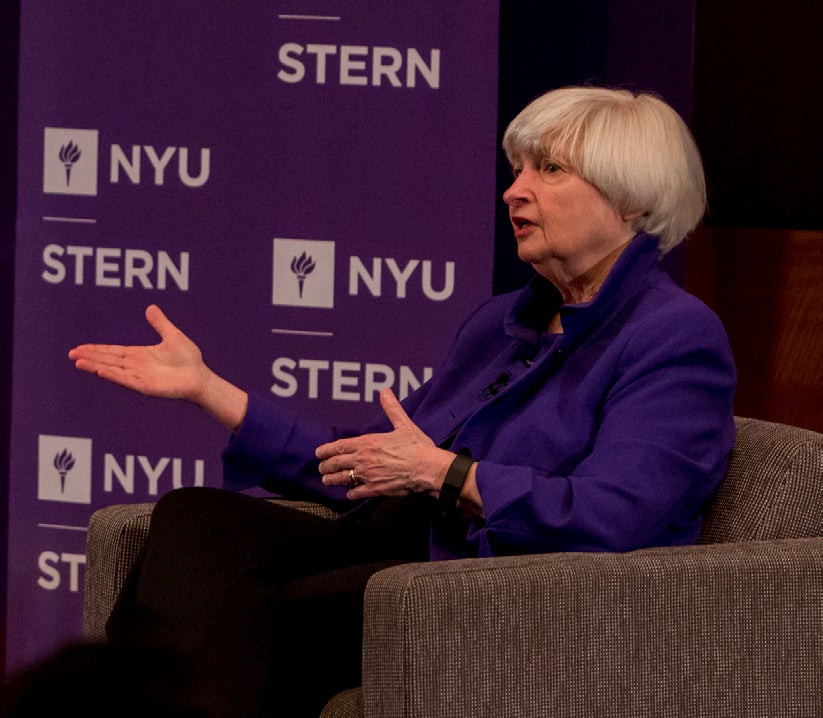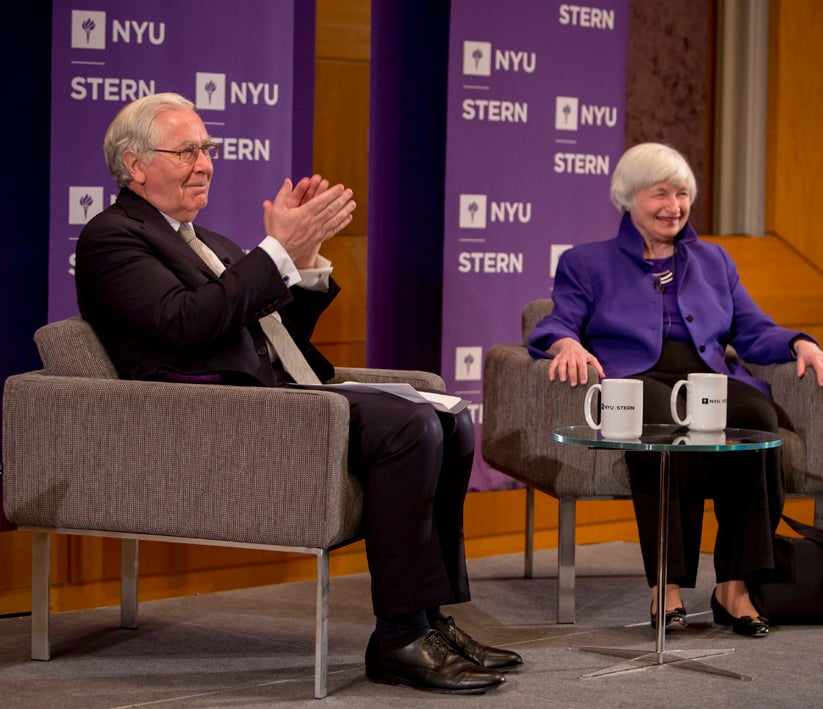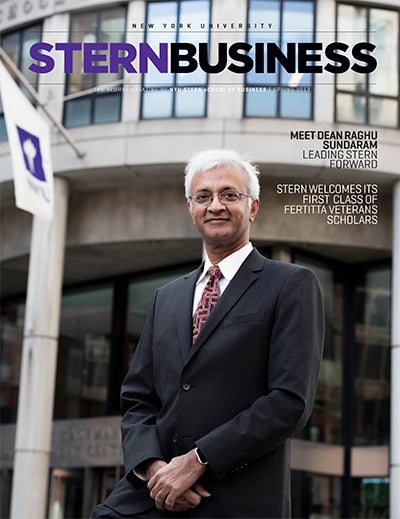Inside the Fed
A Conversation with Janet L. Yellen, Former Chair of the Board of Governors of the Federal Reserve System
by MARILYN HARRISJanet L. Yellen took office as chair of the Board of Governors of the Federal Reserve System on Feb. 3, 2014, for a four-year term that ended Feb. 3, 2018. She also served as chairman of the Federal Open Market Committee, the Fed’s principal monetary policymaking body. Yellen is professor emerita at the University of California, Berkeley, where she has been a faculty member since 1980. She joined Brookings as a Distinguished Fellow in Residence with the Economic Studies program on Feb. 5, 2018. She graduated summa cum laude from Brown with a degree in economics in 1967 and received her PhD in economics from Yale in 1971.
Yellen was interviewed last November 2017 by Lord Mervyn King, professor of economics and law at NYU Stern and NYU School of Law, as part of the “In Conversation with Mervyn King” Series. He served as governor of the Bank of England from 2003 through 2013.

MERVYN KING: What are the most important lessons you’ve learned as Fed chair?
JANET YELLEN: One of the most important things to making good policy is to keep an open mind and not simply assume that history is repeating itself. At the end of 2014, my colleagues issued forecasts in which they envisioned we would be raising the federal funds rate four times in 2015 and another four times in 2016—gradual by historical standards, but nevertheless some significant increases.
History turned out very differently. We ended up raising the federal funds rate once in 2015 and once in 2016. There were a series of shocks—a lot of turbulence, particularly coming out of Europe and emerging markets, a large decline in oil prices, and a huge appreciation of the dollar. Those things had significant impacts on our forecasts and assessment of risks.
We were also engaging in a more fundamental rethink of how the economy works and not assuming that the new normal would be the same as the old normal. During the crisis we stepped on the gas massively. We cut short-term rates to zero and did huge asset purchases. It took all of that accommodation to get the economy barely moving fast enough to begin eroding slack in the labor market. Over the succeeding two and a half years, we have been revising down our estimate of this longer-run normal rate of interest.
Another important thing that I learned is the very careful preparation and deliberations needed among participants in the committee to carefully think through a strategy and try to develop a consensus before presenting it to the public. In October 2017, we began the process of shrinking our balance sheet. Getting to the point of starting that process involved well over a year of discussions in the committee about how we could do that in a way that the public would understand.
MK: What are likely to be the Fed’s biggest challenges over the next few years?
JY: We have two goals that are mandated by Congress: maximum employment and price stability, which we have interpreted and defined as 2 percent inflation. As of November 2017 we have a 4.1 percent unemployment rate, consistent with or even slightly below most estimates of a sustainable rate. Inflation, however, is running below our 2 percent objective. So the issue facing monetary policy is how to craft a monetary policy that maintains a strong labor market but also moves inflation back up to our 2 percent objective. It can be quite dangerous to allow inflation to drift down and not to achieve a central bank’s inflation target, because inflation expectations are likely to also drift down, which would be undesirable. The lower inflation is, the lower the average levels of interest rates in the economy.

We think the new normal is going to be a world where interest rates are low. Now our committee thinks the median estimate of the longer-run normal interest rate is only 2.75 percent, and if inflation falls below 2 percent, that would come down, too. That’s not a lot of scope to use monetary policy to address weakness. That would be a very dangerous state of affairs, so removing policy accommodation too quickly risks leaving inflation below our target with all those dangers.
However, removing policy accommodation too slowly also has risks. The labor market could tighten very quickly and move to levels way below those judged to be sustainable over the longer term. Inflation at very low levels of unemployment risks that it could move up quickly, forcing us to tighten monetary policy and cause a recession. We don’t want a boom/bust policy.
MK: How difficult was it both to work and compete in such a male-dominated environment?
JY: Often in our field, for example, co-authorship is very important. Women are somewhat disadvantaged because the initial conversations take place during social interactions. The guys go out and have a beer, start talking about a topic, and by the time it’s over they’ve got an idea and they’re writing a paper together. Women are often less well-integrated into those casual social networks. Women are not going into economics in the numbers that I think they should be. This also applies to underrepresented minorities. The work and the research that we do will be improved because of diversity.

AUDIENCE QUESTION
Q: Do you see interest on reserves as the new normal or something that will come to an end?
JY: We knew having the power to set interest on reserves to pay interest to banks would be critical to being able to adjust shortterm interest rates with a large balance sheet. It is currently our key policy tool. We absolutely need it. There has been discussion in Congress about taking that power away, and I’ve argued very strenuously against it. If we did not have that power, we would have to change our monetary policy strategy and probably start quickly selling off assets to gain control of short-term interest rates. That would be very disruptive. I think the new normal needs to be that we will retain that power and keep it as our main monetary policy tool.
BIO BOX
- PhD in Economics from Yale University in 1971
- Appointed chair of the board of governors of the Federal Reserve System for a four-year term ending Feb. 3, 2018
- Professor Emerita at the University of California, Berkeley

